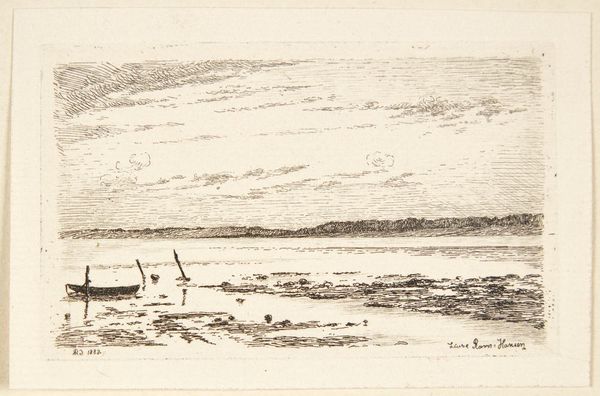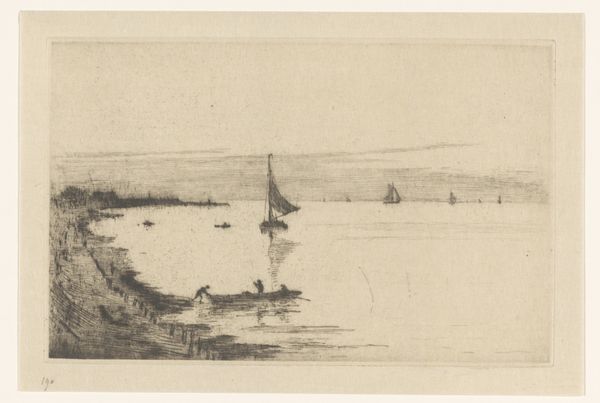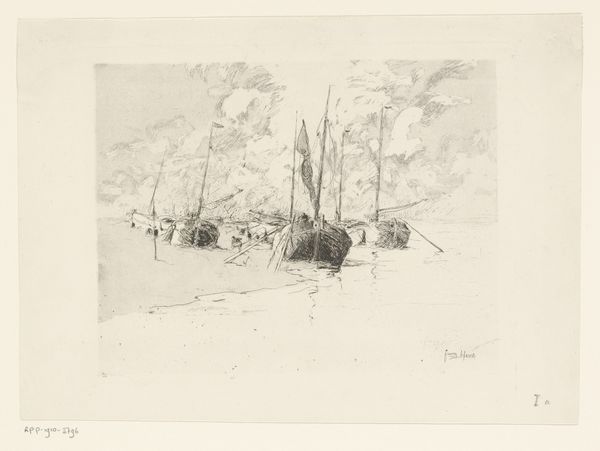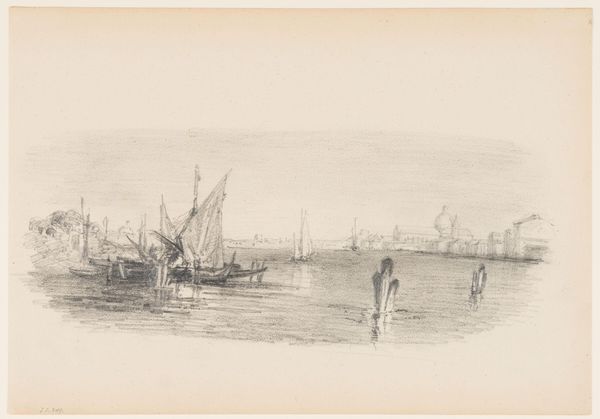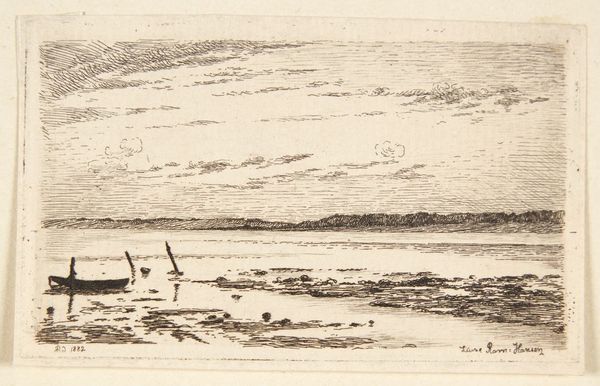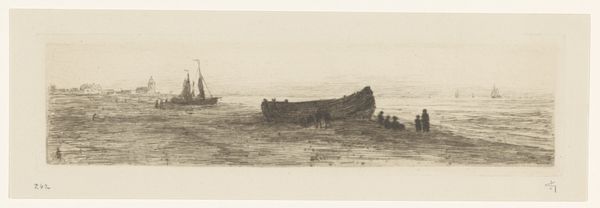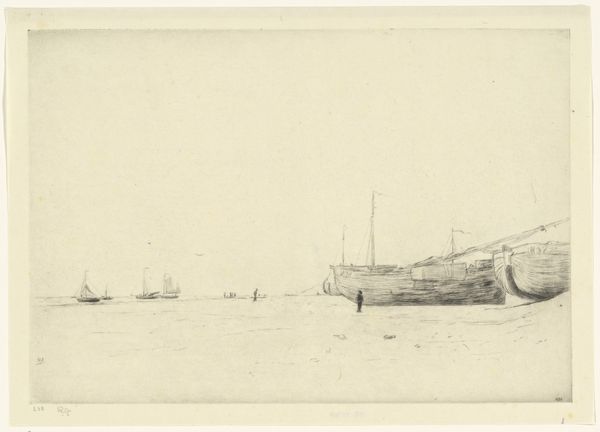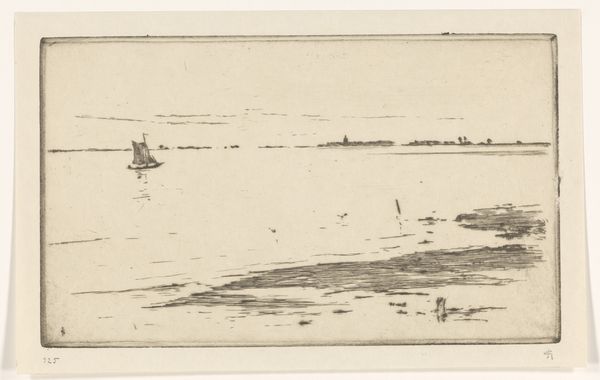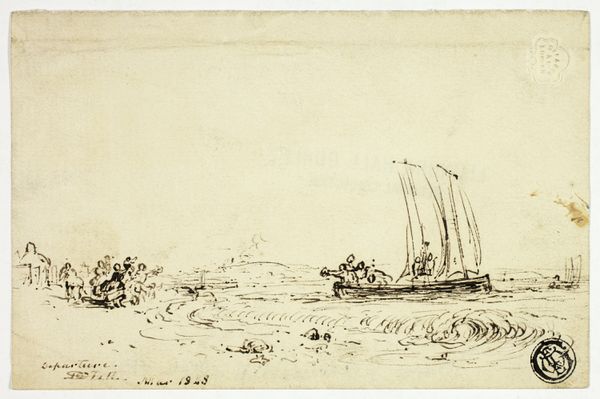
drawing, print, etching, paper
#
drawing
# print
#
impressionism
#
etching
#
landscape
#
paper
Dimensions: 69 × 109 mm (image/plate); 74 × 109 mm (sheet)
Copyright: Public Domain
Curator: This is "Railway Bridge, Chelsea," an etching by Theodore Roussel, dating from around 1888 to 1889. Look at the deftness of line and subtle gradations he achieves. Editor: There’s such quiet intensity here, isn't there? It evokes that feeling of transience, like you’re witnessing a scene on the verge of disappearing. I'm drawn to the somber almost hazy atmosphere in the drawing. Curator: Absolutely. The scene depicts the Thames, doesn't it? See how Roussel’s captures the boats and the distant buildings with this incredibly nuanced mark-making. These are vessels traversing history in a way, carrying cultural significance and representing trade. The boats in a way are like little stories sailing along. Editor: It really feels as if he’s documenting a working class river. While his style aligns with Impressionism, the focus seems more grounded in the everyday experiences of maritime laborers, compared to say Monet, who explored more of leisure activities. Where does this intersect for a female or minoritized rower during that time? Who exactly are we capturing, who is able to traverse that bridge? Curator: That is a good way to put it; I see it also reflecting Whistler’s influence and the Aesthetic movement; he emphasizes the beauty and symbolism inherent in the natural and urban landscape, but also highlights this underlying class system. Notice that by focusing on the Thames, that’s where a majority of England’s trade flows and history lies. Editor: Exactly. The bridge is also significant; it represents a nexus of progress but also marks geographical, economical and class based divides, too. You have that working river juxtaposed against this burgeoning city of industry, signaling the growing tensions of Victorian England. Curator: That's fascinating. By stripping down the details, the piece amplifies the psychological impact. I wonder if this approach can echo today. Does this focus still speak of inequalities of place in any way? Editor: Certainly. It encourages a crucial discussion around how urbanization continues to impact our waterways, disproportionately impacting marginalized communities today. Curator: It offers that bridge across time. Editor: Exactly; provoking crucial reflection on labor, urban development, and its lasting impact today.
Comments
No comments
Be the first to comment and join the conversation on the ultimate creative platform.
